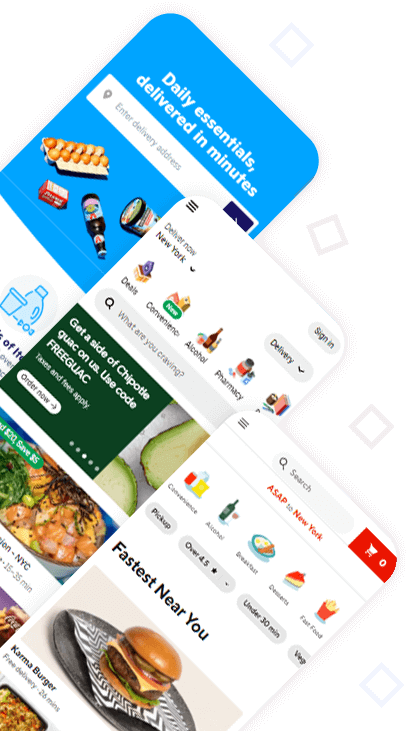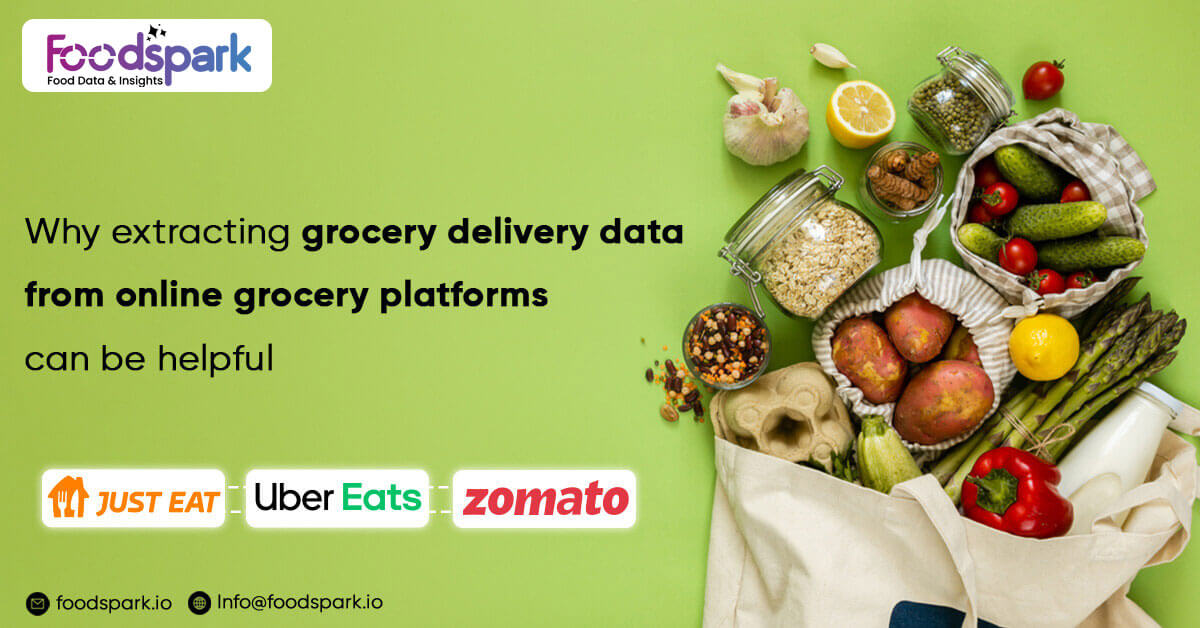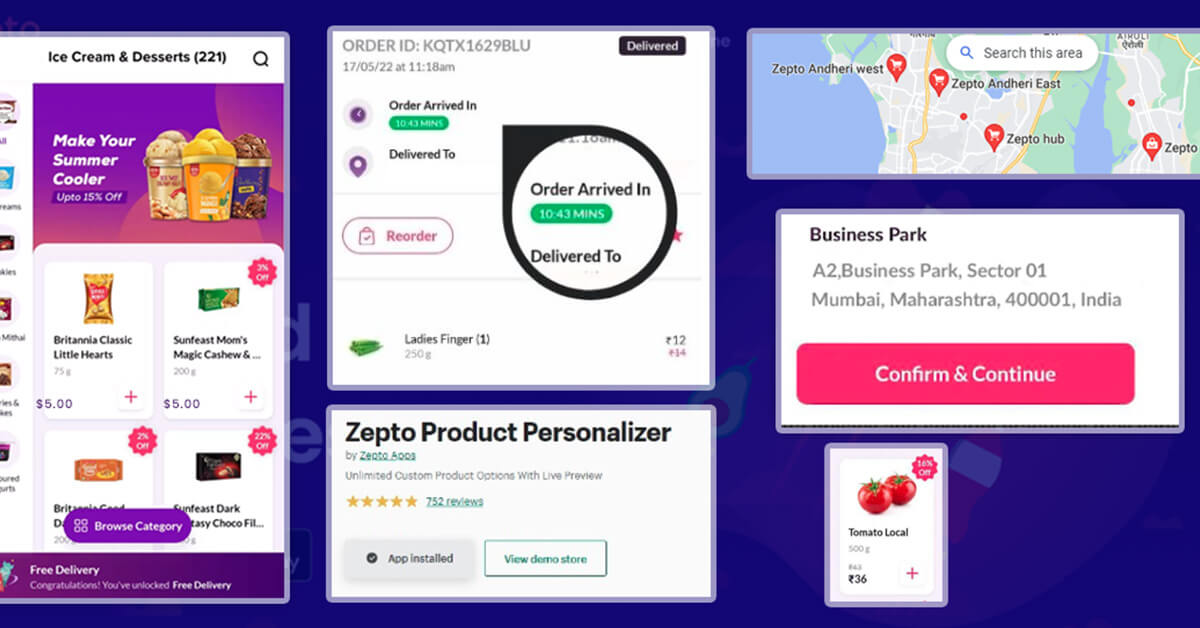Let's talk!
We'de love to hear what you are working on. Drop us a note here and we'll get back to you within 24 hours.

We'de love to hear what you are working on. Drop us a note here and we'll get back to you within 24 hours.

Online grocery platforms make it possible to order groceries online and have them delivered to your door. This process saves time, makes life more accessible, and helps the environment by reducing the number of vehicle trips to local supermarkets. But what do you do when you want to know more about the data behind these grocery orders? Typical methods of gathering data, like surveys or in-person interviews, just don’t cut it. This article will show you where and how to get real-time data from your favorite online grocery platform and how to scrape grocery delivery data.

Online grocery platforms gather (and sometimes even store) a great deal of data. Shoppers provide feedback, preferences, and detailed information on what they want to eat, how they want to shop, and what they typically buy. Vendors can also aggregate data from each order placed on their platform and its ingredients’ SKUs. This data is irresistible to many businesses, and the online grocery industry is no exception.
Sometimes getting the data you need from online grocery platforms takes effort. The amount of information they’re willing to share can vary greatly, and sometimes they want to keep it private.
To get as much information as possible, we recommend researching each online grocery platform and finding those that offer the data you need. This article will help you find a method that works for you!
Grocery data can be used to help you understand your shoppers and their online grocery shopping habits. You can then use this information to fine-tune your marketing campaigns and even predict demand for items in the future. This type of data is valuable, but it’s also challenging to collect. People are reluctant to share their shopping habits and often aren’t willing to provide more than a small amount of information about their purchases.
1. Survey Your Customers
Surveying your customers is generally the best way to find out what they’re shopping for, their most common grocery purchases, and how they like to shop. You can use the data you collect to increase your online grocery sales and encourage customer loyalty. This information can also help you find a niche or create a market that didn’t exist before. Surveying your own will help you understand what people are thinking about their shopping habits and make any necessary changes so you can provide an even better experience for your customers.
2. Use Customer Segmentation
Customer segmentation is a marketing strategy that separates shoppers based on their behaviors, preferences, demographics, etc. This practice can help you target specific segments of your customers, such as new shoppers. For example, a popular segmentation strategy separates data based on how long someone has been a customer. This information can be used to find new customers and encourage them to place larger orders.
3. Use User Profiles
User profiles are designed for specific shoppers and their preferences. They show you how customers shop and which items they prefer so you can provide them with an experience tailored to their needs. You can also use this data to predict your customers’ habits and find trends in the data that will guide the direction of your marketing campaigns going forward.
4. Review Shopping Habits
You can use shopping habits to improve customer experience and find ways to offer them better products and services. For example, you can track how long your customers spend on your website or how often they return to shop. You can determine which of your products are most popular so you can start offering more of them in the future.
5. Use Customer Appreciation
Customer appreciation is another way to recognize customers and show gratitude for their loyalty by rewarding their purchases. This strategy works well with repeat shoppers loyal to your brand, but it should be used because it could also alienate new customers who need to learn what the rewards are (and may not use your platform again).
6. Use Website Statistics
Website statistics are similar to marketing data but are often more specific to your platform’s activities. For example, you can track which of your products sell the fastest so you know what to keep in stock, or you can monitor where your customers are shopping to focus on improving those areas of your business. This type of data is helpful for companies because it gives them a wide range of information that can help improve their business and create a better customer experience.
7. Use Revenue Data
Revenue data is another way to see how well your online grocery platform functions and how much money it’s bringing in. This information gives you insight into how to better your business and build a more profitable online grocery platform that will bring in more business for you.
There are many places where you can get grocery data. For example, you can find it on the companies’ websites, marketing materials, and social media platforms. You’ll have to dig around to see what information is available, but it’s well worth the effort since there’s endless information available from these companies.
Many websites aggregate grocery data from online grocery platforms. You can search these sites for shared data, such as how often your customers make purchases, how much they spend on groceries, and more. These sites help you use their data in your research or for reference purposes.
The steps will vary depending on how you collect grocery data. However, they all begin with finding the right company and ordering information.
1. Start with Customer Segments and User Profiles
The first step is determining what customers you want to focus on. This will help narrow your efforts, so you’re not collecting data that isn’t helpful. Some companies have user profiles that allow them to track different customers’ purchase habits and then use those experiences to create a better shopping experience for each customer. You can easily create similar categories for each customer or group using something other than this system.
2. Identify Your Current Customers
Often, you’ll start the process by finding your current customers. This lets you learn more about them and how they shop online. They’ll be a great source of information, but they might only be willing to share a few of their shopping habits with you if they’re happy with how things are going. To encourage their participation, ask them questions about their visits so you can understand what works and what needs to be changed for them to be more satisfied.
3. Survey Customers
Once you have current customers, it’s time to ask them for some of their information so you can create a customized shopping experience for each one. You can collect information about their interests and habits through surveys, web forms, and email. You should ask them questions about the types of products they shop for, the amount of money they spend online, their shopping timeline, and other similar habits.
4. Use Customer Segmentation
Once you have current customers, you can start to take advantage of customer segmentation to target specific segments of your current shoppers. Creating new user profiles based on a shopper’s unique demographics will allow you to provide personalized communication and targeted promotions that their other customers would also appreciate.
The data provided by online grocery platforms will help you create a better customer experience.
The data comes from thousands of different sources and is measured in various ways. However, this information is unique because it’s designed for online grocery shopping. You can use this information to improve your current business model and find new ways to make your platform more successful in the future.
To fully benefit from the data you collect, you must use it wisely. You should understand how your online grocery platform works so you can find ways to make it easier for customers to shop on it or get more out of their experience.
January 21, 2025 B2B marketplaces use data collection to expand and maintain relevance in the food industry. Organizations can improve...
Read moreJanuary 2, 2025 Web scraping has now become an important strategy in the accelerating world of e-commerce, especially for businesses...
Read more